It’s been almost 250 years since the United States of America was founded, and in that time, the bloody war that followed the writing of the Declaration of Independence has been imbued with an almost mythical quality. Rather than a simple conflict over taxation and the right of self-government, the American Revolution has instead become a morality tale: the triumph of good over evil, of freedom over tyranny. The men who played a part in the country’s formation have become legendary figures, none more so than George Washington.
Everyone knows who George Washington is. His face is on the one dollar bill. The capital of the United States is named after him, and the tallest structure in that capital is a monument to him. He was the victorious general of the Revolutionary War and then served as First President of the United States. His face and his name are EVERYWHERE. The Romans used to worship dead Emperors as gods, and the US has come very close to doing the same to George Washington.
But buried beneath the myth is the story of a real man, a man who is full of contradictions. Washington fought for the freedom of others, yet he himself owned hundreds of slaves. He is known as a master military strategist, yet he made several major mistakes that almost cost the Americans the war. He is called the Father of his Country, yet he had no children of his own. He wasn’t perfect, he wasn’t a god. But what he was was uniquely American.
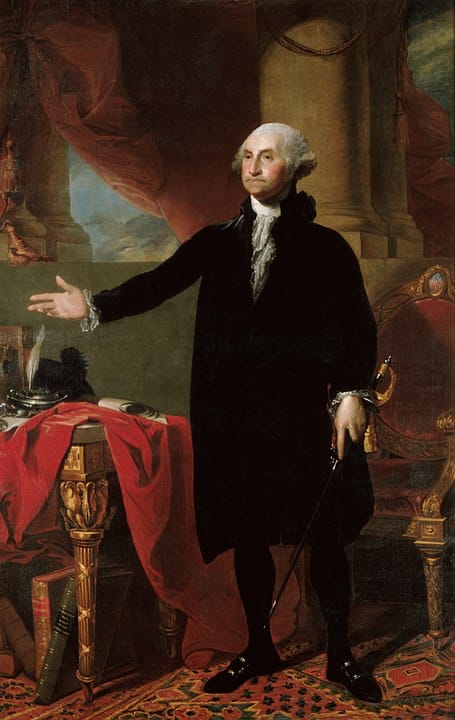
Early Life
George Washington was born on February 22nd, 1732, in the English colony of Virginia. The Washington family had immigrated to Virginia from England in the 1650s, and had become one of the wealthiest families in the colony. They owned several tobacco plantations that were worked by hundreds of slaves, and the wealth this produced for them allowed them to become foremost among the new class of American aristocrats, a status they’d been unable to achieve back in England.
Augustine Washington, George’s father, was very active in local politics, serving as justice of the peace and county sheriff. He died suddenly in 1743 when George was 11 years old, and much of the Washington estates were handled by George’s older brother Lawrence, who George idolized.
Washington was considered well educated for a man of his time, he was trained as a land surveyor and showed talent as a mapmaker and draftsman. But the teenager wasn’t content with such a sedate profession, and craved adventure and action.
When George was 19, his brother Lawrence became ill with tuberculosis. The brothers traveled to Barbados, hoping that the warm climate would alleviate the condition, but Lawrence died in 1752, and George returned home, now the scion of the Washington family.
Early Military Career
After returning to Virginia, Washington sought a commission in the Virginia colonial militia, being appointed as a Major by the lieutenant governor of the colony. He’d joined the military at a very dangerous time. On the frontier, to the west of the established British colonies, the Ohio River Valley was being contested by both Great Britain and France, both of whom were building forts at strategic locations to solidify their hold on the territory.
Washington was named deputy commander of the Virginia Regiment, the first professional colonial military unit. The Regiment was ordered to march to the Forks of the Ohio (the future site of the city of Pittsburgh, Pennsylvania) to oppose the French movement there in 1754. On the way there, the commander of the Regiment, Joshua Fry, fell off his horse and broke his neck. He died soon after, and command passed to Washington.
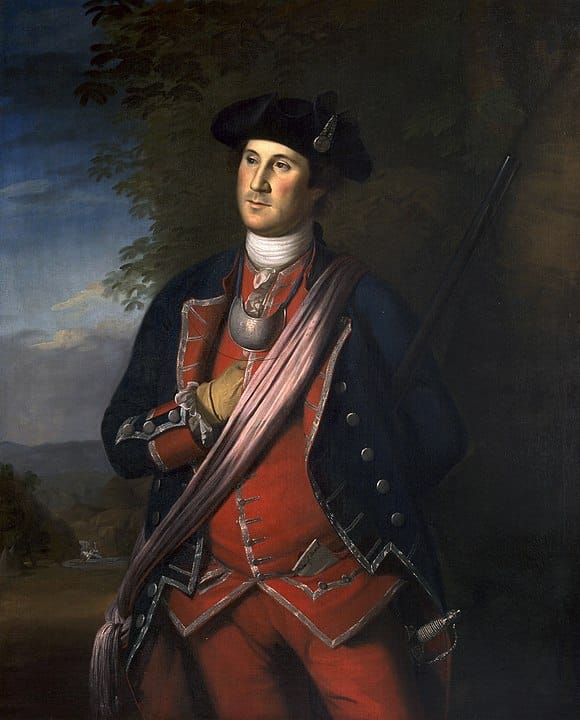
Washington arrived at the Forks and discovered the French had gotten there first, and begun construction on their own fortress, Fort Duquesne. (pronounced Dew-Cain) Washington retreated to contemplate his next move, and he was joined there by a friend he had made the year before, the sachem of the Mingo tribe, Tanacharison. Tanacharison informed him of a force of about 35 French soldiers approaching their position, and suggested an attack.
On May 28th, 1754, the two forces confronted each other. What happened next is a matter of dispute, all that is known for sure is that by the end of the encounter, most of the French detachment was dead, including its commander, Joseph Coulon de Villiers. The French would claim that de Villiers was there on a peaceful diplomatic mission and was massacred, while Washington believed that the French were there to spy on his forces. Whatever happened, the Battle of Jumonville Glen, as it later became known, proved to be the spark that touched off a worldwide war between Great Britain and France, known as the Seven Years’ War.
After the violence at Jumonville Glen, Washington figured that the French garrison at Fort Duquesne was going to attack him sooner or later, so he built a fort of his own, called Fort Necessity. It was a crude construction, essentially a wooden palisade, and would not hold off a determined assault for long. Louis Coulon de Villiers, outraged at his brother’s death, led a force of 600 soldiers to Fort Necessity and attacked it on July 3rd. The Virginians were undisciplined, fled under fire, and at one point during the day broke into the liquor cabinet and got drunk. When the French offered to allow him to return to Virginia with his troops unharmed if he surrendered the fort to them, Washington felt he had no choice, and marched back to what he thought was disgrace and the end of his military career.
To his surprise, the Virginia House of Burgesses blamed the defeat at Fort Necessity on other factors and not on Washington. The next year, the British sent a force of 2,000 soldiers under the command of General Edward Braddock to capture Fort Duquesne, Washington came along as a guide because of his experience with the area.
The British met with disaster at the Battle of the Monongahela on July 9th, 1755. Two thirds of the British force was killed or wounded, including Braddock. Washington earned some distinction during the battle by forming a rearguard to prevent the retreat from turning into a rout resulting in even more casualties.
Washington would serve in the colonial militia until 1758, when he resigned in disgust after being rebuffed in his attempts to secure a royal commission in the British regular Army. The British commanders dismissed Washington and other colonial leaders as amateurs and simpletons, an assessment that would come back to haunt them later.
Road to Revolution
In 1759, Washington married Martha Custis, a young, wealthy widow with one of the largest plantations in Virginia. When combined with Washington’s own holdings, he was now one of the richest men in the Colonies. He delighted in raising his stepchildren, Jack and Patsy Custis, although he and Martha never had children of their own despite being married for 40 years. It is believed that a bout with smallpox as a young man had rendered him sterile.
Washington entered politics, serving in the House of Burgesses and entertaining people of rank at his estate, Mount Vernon. He grew increasingly concerned throughout the 1760s and early 1770s with the British Parliament’s attempt to exert more control over the American Colonies through taxes. Washington, and many others, felt that this was an act of tyranny since the Americans had no representation in the government that was making the laws they were subject to.
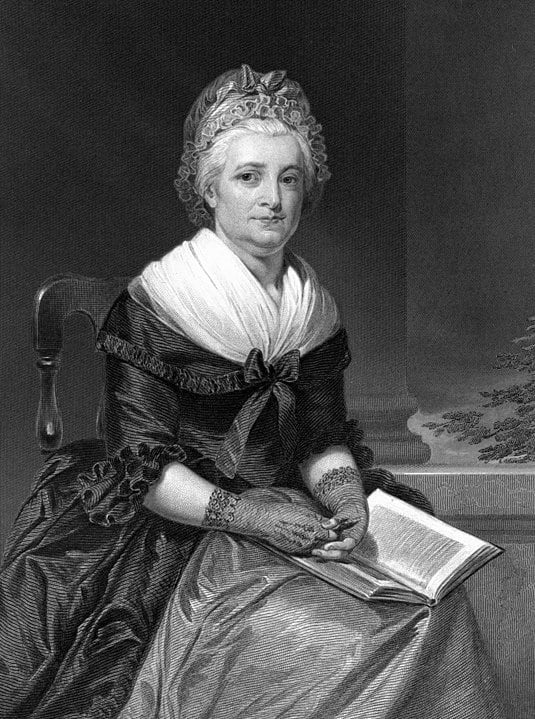
In 1775, the increased tension finally snapped into open conflict in Boston, where British troops under General Thomas Gage were trying to subjugate an increasingly rebellious colonial populace. At Lexington and Concord on April 19th, British regulars and Colonial militia shot at each other for the first time, formally beginning the American Revolutionary War.
Washington represented Virginia at the Second Continental Congress in Philadelphia, which opened soon after the bloodshed in Massachusetts. On June 14th, 1775, the Congress created the Continental Army to provide for the common defense of the colonies, and talk of who would command the new army soon turned to Washington. Washington had never actively campaigned for the job, but he was the only delegate who attended meetings of the Congress wearing a military uniform (which is a perfect example of dressing for the job you want, if you ask us). That, combined with his height (at 6 foot 2, he was much taller than most of the other delegates) as well as the fact that he was the most famous soldier in the Colonies because of his war service 20 years earlier, made him the unanimous choice to lead the new Army. On June 19th, he received his commission, and three days later he departed for Boston.
The Thrill of Victory, and the Agony of Defeat
When Washington arrived in Boston, he found his “army” was really a ragtag group of militia units with no real organization. After the Battles of Lexington and Concord, the British had retreated back into the city, and the Patriots, as they began to call themselves, had blocked off the land routes into the city and put it under siege.
Washington immediately began shaping the militia into a proper army, while keeping the British bottled up in Boston. In October, King George III replaced General Gage with a new commander, William Howe. Finally, in March of 1776, the Continental Army placed cannons on the high ground of Dorchester Heights and began to bombard the British positions in Boston. This compelled Howe to retreat to Halifax by sea, and the Americans had won their first victory.
Washington wasn’t about to rest on his laurels, however. A few weeks later, he moved his army south, to New York City. Washington and Howe both knew that New York was key to controlling the continent, and Washington expected a British invasion force to attack there. He spent the next few months preparing fortifications and continuing to train his troops. British ships began arriving in New York Harbor on July 2nd. Morale was boosted in the Continental Army a few days later when word reached them of the ratification of the Declaration of Independence, which stated that the colonies were declaring themselves free and independent states.
On August 22nd, General Howe landed at Brooklyn, on the western end of Long Island, with 20,000 troops. Five days later, he attacked Washington’s position. The Battle of Long Island was a stinging American defeat, the Continentals suffered 20% casualties. The American Revolution could have ended right there, but Washington organized a stealthy nighttime retreat across the East River onto Manhattan Island. When the British awoke the next day, they were astonished to find the Americans were gone.
On September 15th, the British landed on Manhattan Island. The American troops did not even attempt to stand and fight, but fled in a panicked rout. Washington was enraged at the cowardice of his men, and at one point was within 100 yards of the advancing British troops. An aide had to grab the bridle of his general’s horse and lead him away. New York fell soon after, and would be occupied by the British for the remainder of the war.
The Continental Army was pushed through New Jersey and into Pennsylvania when winter set in and Howe broke off his pursuit. In the 18th century, armies typically did not fight in winter, and Howe returned to New York to wait for the spring thaw. Washington, meanwhile, knew he had to do something. Morale was at an all time low, desertions were increasing, and Washington figured if he didn’t act quickly, his entire army would dissolve.
The Crossing of the Delaware
Washington had developed an effective spy network by the end of 1776, and he received intelligence that a garrison of 1,500 German mercenaries, Hessians, were in winter quarters near Trenton, New Jersey. They were complacent and not expecting an attack. That was where Washington planned to strike. He hoped a victory would boost Patriot morale and lead to a surge in volunteers.
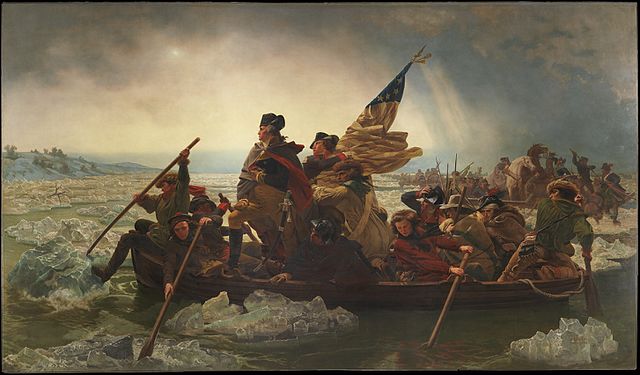
On Christmas night, Washington led his army on a stealthy nighttime crossing of the Delaware River into New Jersey, a remarkable military feat. On the morning of December 26th, the Continentals took the Hessians completely by surprise, and took over 800 of them prisoner. They also took tons of crucial supplies and weapons to equip their army with.
A few days later, the British attacked Washington’s position at Trenton and were repulsed. Then, in another remarkable military maneuver, Washington circled around the British Army and attacked the garrison at Princeton, inflicting the third defeat on the British in 10 days. The British retreated from southern New Jersey entirely, and Washington finally went into winter quarters at Morristown.
This stunning series of victories likely saved Washington’s army. But the war was far from over.
The War Turns
The British plan for the war in 1777 was more complex than the year before: An invasion army led by General John Burgoyne, called “Gentleman Johnny” for his elaborate uniforms and lavish lifestyle, would advance south from Quebec to take Albany, New York. The goal was to isolate New England, which had the highest concentration of Patriots and was contributing the bulk of volunteers to the Continental Army, from the rest of the colonies, which they felt would be easier to control.
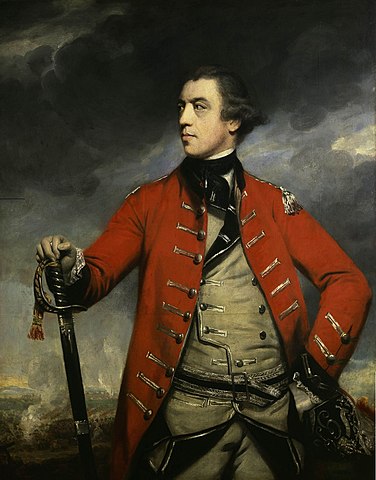
Howe, in New York, was supposed to send troops to support Burgoyne, but controversially, failed to do so, likely due to personal rivalries between the senior British commanders. Instead, in the summer of 1777, Howe set out from New York to capture Philadelphia, where the Continental Congress met. Howe defeated Washington at the Battle of Brandywine and in September entered Philadelphia. The Congress fled west to York, Pennsylvania. But the real action was taking place to the north, in New York.
Gentleman Johnny had led his men into a trap without realizing it, finding himself completely surrounded by an American army commanded by Horatio Gates. The expected help from Howe never came, and he was defeated in detail by the Americans in two battles at Saratoga in September and October. On October 17th, he was forced to surrender his army to Gates.
The surrender of Burgoyne sent shockwaves around the world, nowhere more so than in Paris. Since the war began, the French government had been looking for a reason to support the American cause, since it would hurt their British rivals. The victory of the Americans at Saratoga convinced King Louis XVI that the Americans could stand up as a fighting force, and entered into a formal alliance with the Americans at the end of 1777. They promised troops, money, supplies, and most importantly, a naval fleet, something the Americans sorely lacked. Horatio Gates, meanwhile, took much credit for the victory, despite not having much to do with the actual battle strategy itself, and used it to advocate himself to replace Washington as General in Chief, an attempt that ultimately failed.
Valley Forge to the End of the War
Washington’s army made winter camp at Valley Forge, north of Philadelphia. That winter was brutal, bitterly cold and snowy, and around 2,500 American soldiers died at the encampment. The American cause was greatly helped by the presence of two foreign officers who wanted to help the American cause. The Marquis de Lafayette, a 19 year old French nobleman and soldier, sailed for America in late 1777, against the orders of his King, and was made a General by Washington. Lafayette brought knowledge of European warfare to the Americans, and he had a positive effect on morale. It is believed that the eventual alliance between France and the Americans was due in no small part to his efforts.
Meanwhile, Baron Friedrich von Steuben, a former Prussian Army officer and administrator, left Germany after being accused of having homosexual affairs. He arrived at Valley Forge in February 1778 and was made Inspector General of the Army. He was influential in developing a training program that turned the Continental Army into a professional fighting force. He was a colorful figure, elaborately dressed and prone to cursing at the soldiers in several languages.
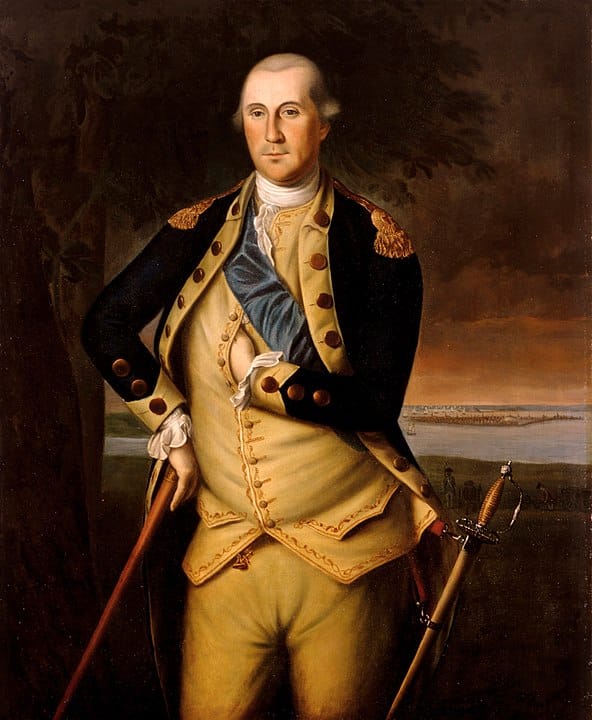
Facing the fallout from the campaign of 1777, General Howe resigned, and was replaced by Sir Henry Clinton. Clinton abandoned Philadelphia and marched back to New York, pursued by Washington. The two armies fought an indecisive battle at Monmouth on June 28th, and came back to New York, to discover a French fleet in New York Harbor. The French had declared war on Great Britain, and what had been a regional civil conflict was now a continent spanning war involving several major European powers. The British government now was sending few reinforcements to their armies in America, more concerned with protecting their Caribbean possessions.
The focus of the war now moved to the southern colonies. After the British captured the city of Charleston, South Carolina, in early 1780, an army commanded by Lord Cornwallis routed Horatio Gates at the Battle of Camden, which ended Gates’ military career. He was replaced by General Nathaniel Greene, who engaged in hit and run tactics with Cornwallis’ army that slowed their advance north to Virginia.
Washington, whose ranks were now swelled by French soldiers and a French naval fleet, received word that Cornwallis had moved his army to Yorktown. Sensing an opportunity to trap him there, Washington moved his army away from New York to Virginia.
Cornwallis found himself surrounded. He was unable to retreat by sea because the French fleet had blockaded it, and Washington’s troops had laid siege to his fortifications.
After two weeks of battle, Cornwallis realized his situation was hopeless. He surrendered to the allied army on October 19th, 1781. The war was, for all intents and purposes, over. The defeat at Yorktown caused the collapse of Lord North’s government in London, and the new government called for peace talks. In September 1783, the Treaty of Paris was signed, in which Great Britain recognized the United States of America as an independent nation. The last British troops left New York at the end of 1783. Against all the odds and hardships, George Washington and the Continental Army had won the war, and earned America her independence.
Mr. President
Washington was a national hero now. There were many in Congress who were prepared to offer him the title of King, but Washington refused. He was at the head of the army and could have easily taken power had he wanted to, but Washington wasn’t interested in being a dictator. So, in December of 1783, he voluntarily resigned his commission as General in Chief and retired to Mount Vernon.
The Articles of Confederation, which governed the new nation, quickly proved to be inadequate, and it became clear that a national constitution was needed to establish a government for the United States. Washington was called out of retirement to serve as President of the Constitutional Convention of 1787 in Philadelphia. There, he oversaw the creation of a document that still forms the basis of American law more than 200 years later, and serves as the basis for national constitutions all over the world.
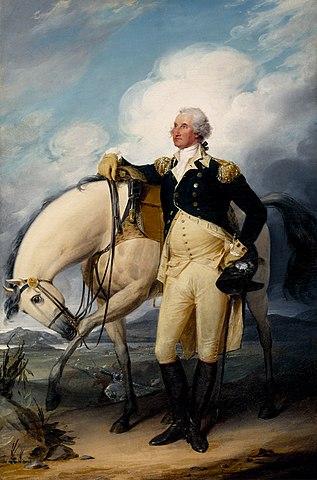
The first election for President of the United States was held in 1788, and Washington was elected to serve as the First President. He was inaugurated in New York City in April 1789. Being the first President, Washington was left to define many of the precedents that still serve the Executive Branch today. He settled on being addressed as “Mr. President,” turning down more elaborate titles like “His Excellency” or “His Highness”. He gave the first inaugural address, and the first Presidential address to the assembled Houses of Congress. He also formed the Executive Branch into a Cabinet of Department secretaries, which still persists to this day.
Most of Washington’s time as President was spent playing referee to two warring factions within his Cabinet. Washington was the only President not to be a member of a political party, and didn’t like the idea of them in the first place. The same could not be said of Alexander Hamilton, Secretary of the Treasury, and Thomas Jefferson, Secretary of State. Hamilton believed that the future of the nation was in a strong federal government, a national banking system, and commerce in cities, and formed the Federalist Party, while Jefferson favored decentralized government controlled by the states, and an economy controlled by agrarian interests and hated the idea of banks, he formed the Jeffersonian Republican Party.
The two were bitter rivals and cabinet meetings often degenerated into shouting matches, with Washington having to step in to maintain order. He favored Hamilton’s plan, and spent most of his first term on economic issues. He was exhausted by 1792, and showed no interest in running for a second term, but was begged to do so by all sides and was unanimously re-elected. But in 1796, he outright refused to run for a third term, and chose to retire. This set another precedent: no President would serve more than two terms until Franklin Roosevelt in 1940, and after Roosevelt died in office during his fourth term, Congress passed an amendment to the Constitution that set the two term limit into federal law.
Last Days
Washington again retired to Mount Vernon, Vice President John Adams being elected in 1796 as the 2nd President. During this time, relations with France had deteriorated after the French Revolution and it seemed like there might be war. Washington accepted the position of Commander in Chief of the United States Army in 1798, to defend the country if it was attacked. But no army would appear, and Washington didn’t have a field command.
On December 13th, 1799, Washington complained of a sore throat. The next day, it was even worse. Doctors were summoned, but disagreed on what was causing the illness and what to do about it. At one point nearly a pint of blood was drawn from him, bloodletting being a common medical practice at the time, though it probably just made things worse. At around 10:30 PM on December 14th, George Washington died, aged 67.
News of his death touched off a wave of national mourning. At his funeral on December 18th, General Henry Lee, known as Lighthorse Harry, gave the eulogy. In an ironic twist of fate, Lee’s son, Robert E. Lee, would be a leading figure in a rebellion against the nation that George Washington played a key role in founding.
Washington owned over 300 slaves at the time of his death. Slavery was essential to the building of his family’s wealth, but as he grew older, Washington grew more uneasy with the institution of slavery. By the 1780s, Washington was privately in favor of emancipation. He kept silent on the matter while President, recognizing that it played such an oversized role in the economy of the southern states, and that it could destroy the new nation. Washington and the other Founding Fathers’ failure to settle the question of slavery would lead to civil war 60 years after Washington’s death.
Washington wanted to free his own slaves while he was still alive, but was unable to persuade the other heirs of the Custis estate to free their slaves at the same time. The slaves that worked at Mount Vernon had intermarried and started families, and Washington said he did not want to break those families up by freeing some and not the rest, meaning the ones not freed could still be sold to someone else and shipped away. In his will, he ordered that half of his slaves be freed immediately after his death, with the rest being freed after Martha’s death. Martha preempted this by freeing all of his slaves in January 1801, but never freed her own slaves, thus causing the breakup of slave families that Washington had tried to prevent. She died in May 1802 at the age of 70.
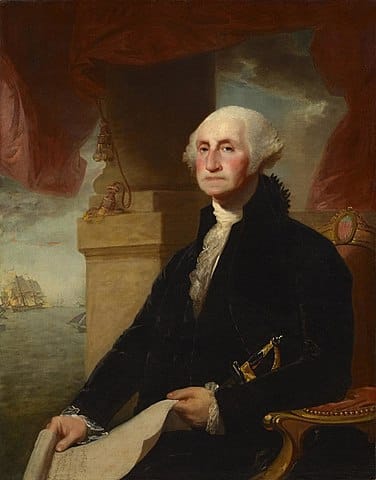
George and Martha Washington were interred in a tomb at Mount Vernon, where they still are today despite some attempts by the American government to have them moved to a tomb in Washington DC, the new capital that was named after the nation’s first President. After his death, memorials and monuments to Washington went up all over the country. In the capital, the 555 foot tall Washington Monument was completed in 1888. Because of a federal law passed in 1910 to limit the height of buildings in Washington DC, the Monument is the tallest building in the city and is likely to remain so in the future.
The myth of Washington outgrew the man Washington very quickly. A character emerged that was almost godlike, the person every American aspires to be. But we think his story is interesting enough on its own that it doesn’t need to be embellished like that. Washington the man was a far more complicated figure than Washington the myth portrays him as. But that just makes him more compelling as a historical figure. Perhaps Lighthorse Harry Lee said it best in his eulogy of Washington, when he described him as:
“First in war, First in peace, and first in the hearts of his countrymen.”



